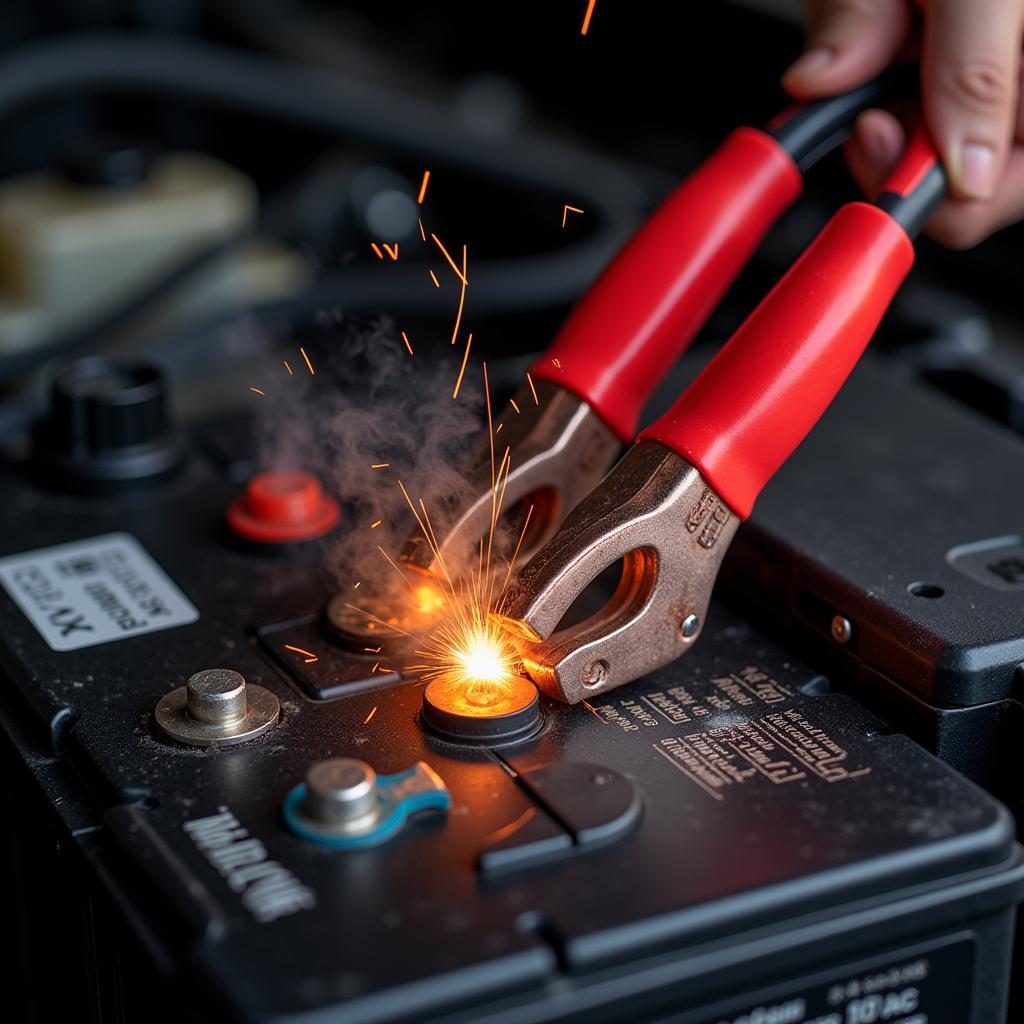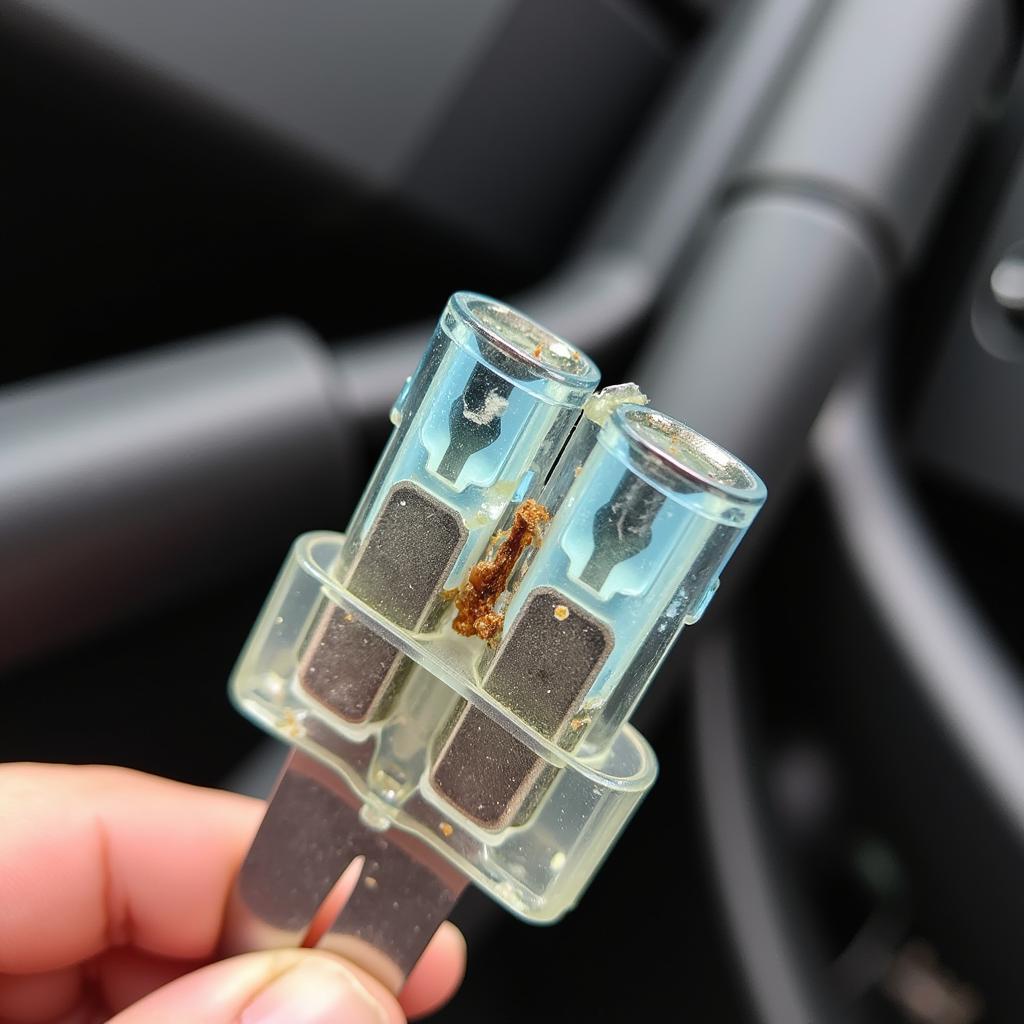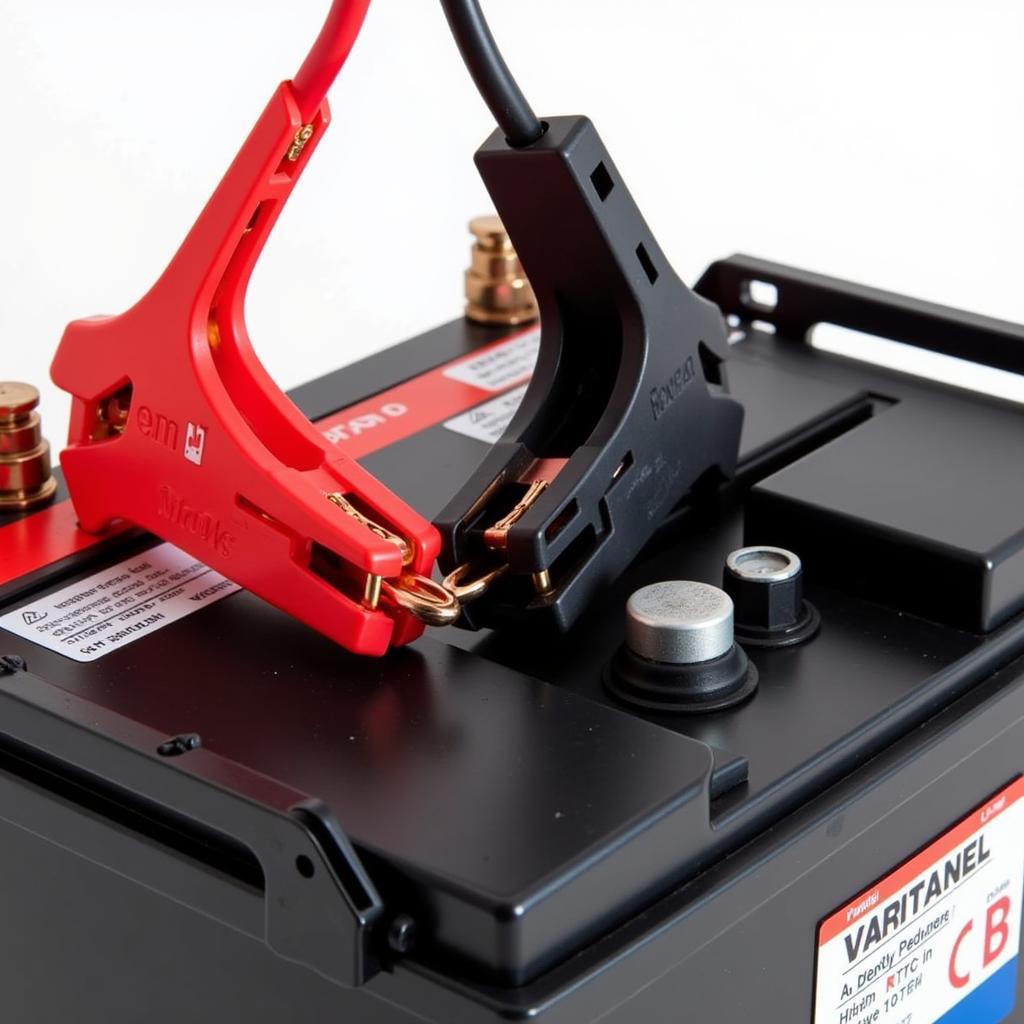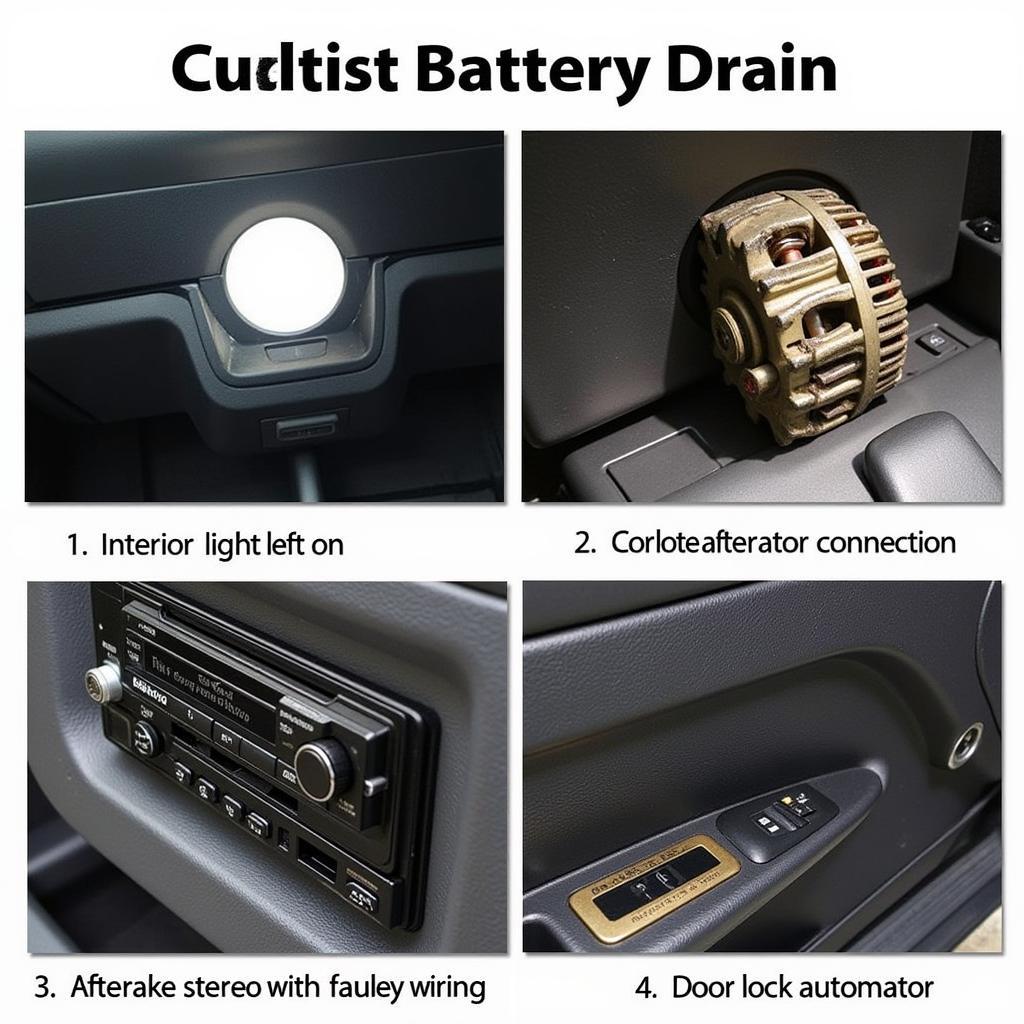Connecting your car battery incorrectly can lead to a range of issues, from minor inconveniences to significant damage. So, will your car start if the battery is connected wrong? The short answer is probably not, but the longer answer is more complex and involves understanding the potential consequences of reversed polarity.
Connecting a car battery backward, meaning the positive (+) and negative (-) terminals are switched, can cause serious electrical problems. Instead of providing power to start the car, the reversed current flow can damage sensitive electronic components like the ECU (Engine Control Unit), the alternator, and various sensors. In some cases, it can even blow fuses and melt wiring.  Reversed Car Battery Connection
Reversed Car Battery Connection
Understanding the Dangers of Incorrect Battery Connection
Before we delve into the specifics, it’s crucial to grasp why a reversed battery connection is so hazardous. Your car’s electrical system is designed to operate with a specific current flow. When you reverse the polarity, this flow is disrupted, and a surge of electricity can overwhelm delicate components not designed to handle such a reversal. This can lead to immediate failure or long-term damage that might not be apparent right away.
What Happens When You Connect a Car Battery Backwards?
The most immediate effect of a reversed connection is typically a blown fuse. Fuses act as safety devices, breaking the circuit when there’s an overload. While this is inconvenient, it’s often the least damaging outcome.  Blown Car Fuse
Blown Car Fuse
In more severe cases, the reversed current can damage diodes within the alternator, effectively rendering it useless. The alternator is responsible for recharging the battery while the engine is running, so a damaged alternator will lead to further starting problems down the line. Also, the ECU, the brain of your car’s engine management system, is highly susceptible to damage from reversed polarity. Replacing an ECU can be an expensive repair. Other electronic components, such as the radio, power windows, and various sensors, can also suffer damage.
“Connecting a car battery backward is like sending a shockwave through your car’s electrical system,” says automotive electrical expert, David Miller. “It’s not just about whether the car will start; it’s about the potential for widespread and costly damage.”
How to Correctly Connect a Car Battery
To avoid these potential problems, it’s essential to connect your car battery correctly. Always double-check the markings on the battery and the cables. The positive terminal is usually marked with a plus sign (+) and is often slightly larger than the negative terminal, marked with a minus sign (-).
- Positive First: Begin by connecting the positive (red) cable to the positive (+) terminal of the battery. Ensure the connection is secure.
- Negative Last: Next, connect the negative (black) cable to the negative (-) terminal of the battery. Again, ensure a tight connection.
- Double-Check: Before attempting to start the car, take a moment to double-check that both cables are connected to the correct terminals.
wiring a car radio harness are delicate and require precise connections. Similarly, wiring radio in car needs careful attention to polarity to avoid damage. Just like with the battery, reversed connections can lead to malfunctions. The same principles apply to vw car radio wiring, where accurate wiring is crucial for proper functioning.
“Taking a few extra seconds to double-check your connections can save you hundreds, if not thousands, of dollars in repairs,” advises Sarah Johnson, a seasoned automotive technician.
 Correctly Connected Car Battery
Correctly Connected Car Battery
What to Do If You’ve Connected the Battery Wrong
If you realize you’ve connected the battery backward, disconnect the cables immediately. Start by removing the negative cable first, then the positive cable. Inspect the fuses and replace any that are blown. If you notice any unusual smells, smoke, or signs of damage, it’s best to have a qualified mechanic inspect the vehicle’s electrical system to assess the extent of the damage.
Conclusion
While a car might not start if the battery is connected wrong, the more significant concern is the potential for damage to the electrical system. By understanding the risks and following the correct procedure for connecting a car battery, you can avoid costly repairs and keep your car running smoothly. Always double-check your connections and prioritize safety. Remember, a little caution can go a long way in protecting your vehicle’s electrical components and preventing the headaches of a misconnected battery.
FAQ
- What is the most common consequence of connecting a car battery backward? Blown fuses are the most frequent outcome.
- Can I damage my car’s computer by connecting the battery incorrectly? Yes, the ECU is very susceptible to damage from reversed polarity.
- What should I do if I suspect I’ve connected the battery wrong? Disconnect the cables immediately, starting with the negative cable.
- Will my car always show immediate signs of damage if the battery is connected incorrectly? Not always, some damage might not be apparent right away.
- How can I tell which terminal is positive and which is negative? The positive terminal is usually marked with a plus sign (+) and is often slightly larger.
- Is it safe to jump-start a car with a reversed battery? Absolutely not, this can cause serious damage to both vehicles.
- Should I take my car to a mechanic after connecting the battery wrong? If you notice any signs of damage or unusual smells, it’s best to have a professional inspection.

